One of our favorite places to observe the wild horses is Boicourt Ridge. On a hot summer day it is not unusual to find several bands fighting flies by catching the breezes on the high grassy ridge or rolling in the mud flats below. Stallions vie for mares and bachelors practice their skills on the rolling grassy butte. Sometimes bands are hidden in grassy draws or in the small, quiet valley nestled between the buttes north of the ridge, but there are almost always horses to be found there. Last spring I found our how the area got it's name.
When a friend sent my blog to her mom, she sent it on to her cousin, Ramona. Ramona sent me a quick email to tell me that her mother was Roxie Biocourt, who had grown up in what is now the Boicourt area of the Park.
In 1909 Albert (Bert) and Nora Boicourt brought their little family of three girls to North Dakota from Westport Indiana. A stone mason, Bert felt there was a future for himself and his family in ND. Upon arriving in the Badlands, they and two other families pitched tents on the Talkington Ranch until they could move into more permanent housing. By fall of the following year they were able to build on 160 acres including a spring, rolling prairie, tree lined draws and the flats below. Finding the water to be bad at the home site, Bert built a system to pipe fresh water down to a cistern from what is now known as Boicourt Spring. The Boicourts and several other families thrived in the little community they called Pleasant Flat.
Though the weather was often harsh and the crops not always good, the family was comfortable and happy in their little paper lined clapboard house. Bert tilled the land and kept the animals fed while Nora took care of her family and home. In the evenings she would spend hours braiding rugs and piecing quilts while Bert read aloud to the children. One of their favorite activities was singing while Nora played the organ and Bert accompanied her on the harmonica or violin. All the girls became accomplished musicians, learning the instruments from their parents. Also riding in the hills or off to Medora on an errand was an activity the girls enjoyed.
During their stay in the area, Bert found many opportunities to use his stone masonry skills. With the birth of Theodore Roosevelt National Park there was a need for various stone structures. Bert headed a crew who built nearly 40 stone bridges for the Park road, entrance sign structures, and the Contact House, which is now known as the Old Entrance. His initials can be found etched in the fireplace of that historic structure. In Medora they built DeMores Park to commemorate the Marquis' part in the History of the Badlands. Ramona sent a photo of her overlooking the Pleasant Flat.
In keeping with my theme of historic names for the new foals this year, we have a Roxie and a Boicourt. These foals will be included in a coming post on all the 2009 foals.
Subscribe to:
Post Comments (Atom)


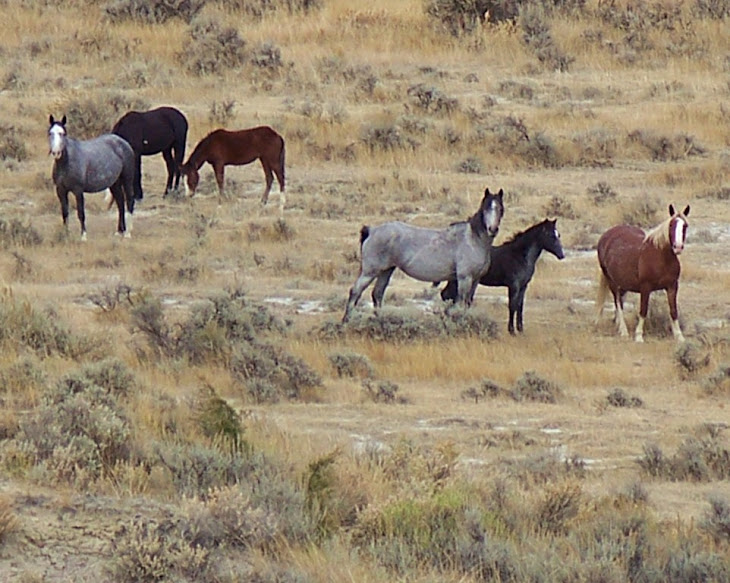
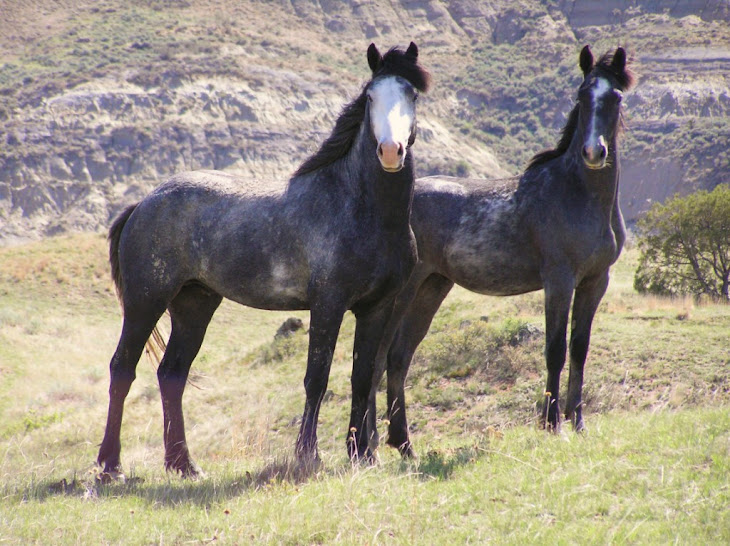









































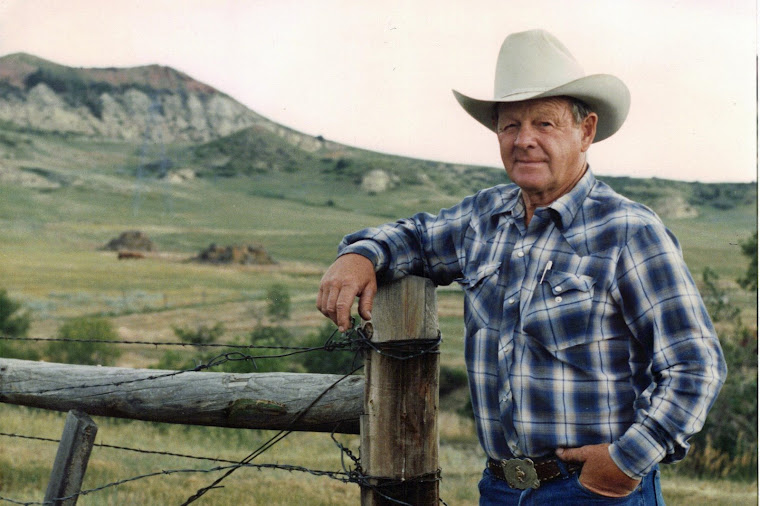






































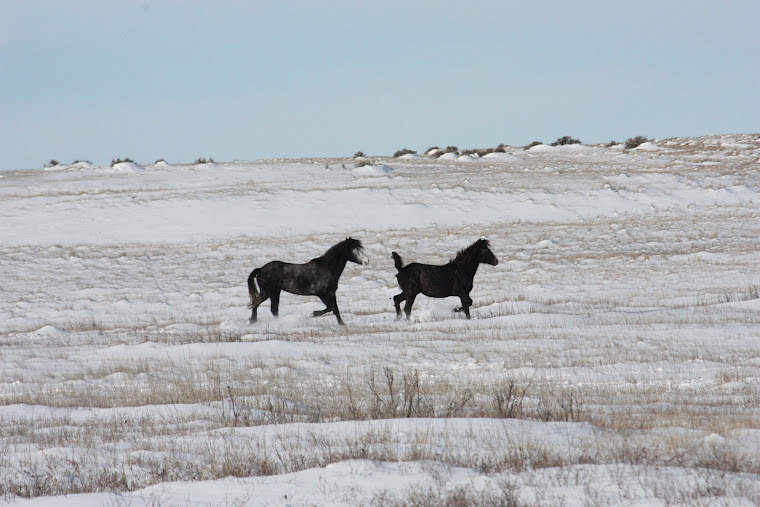
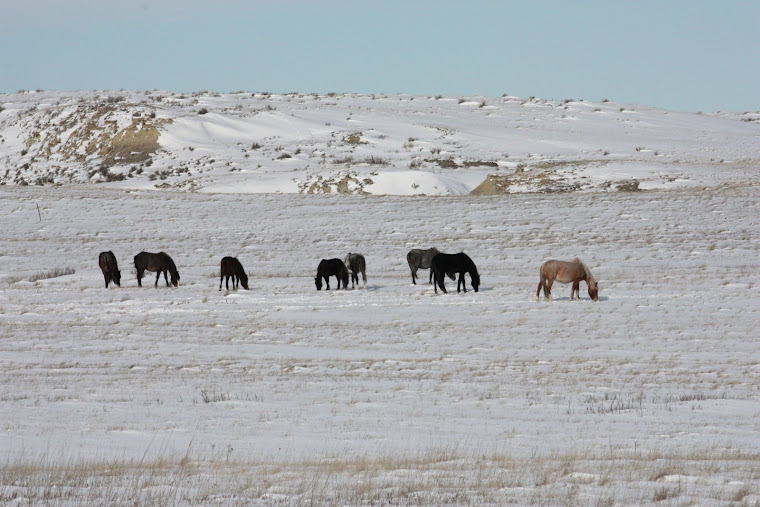
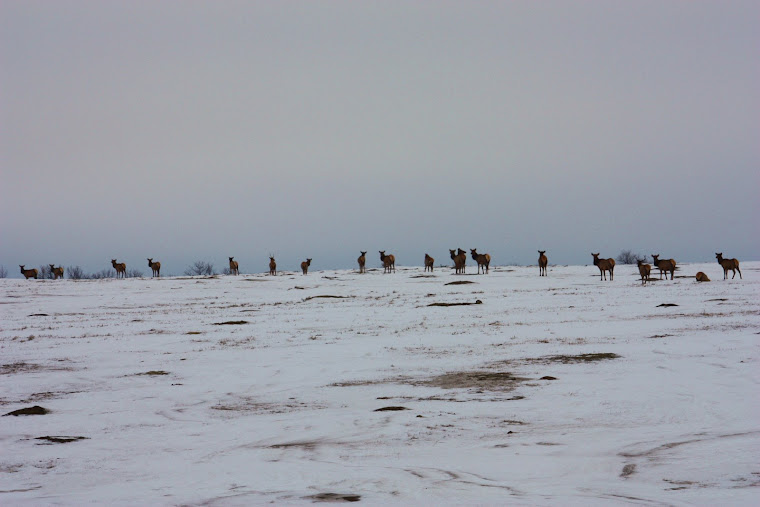





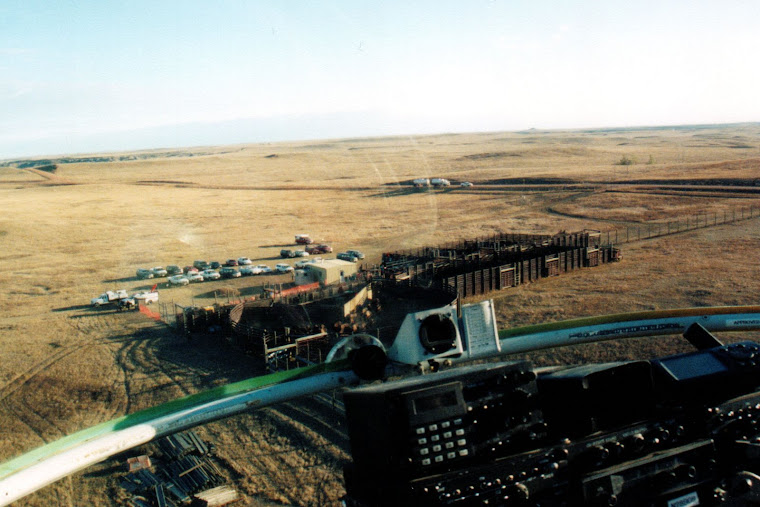
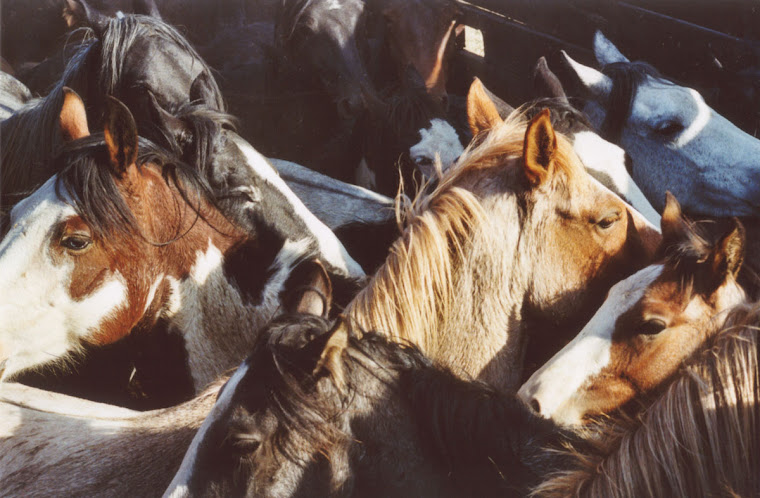
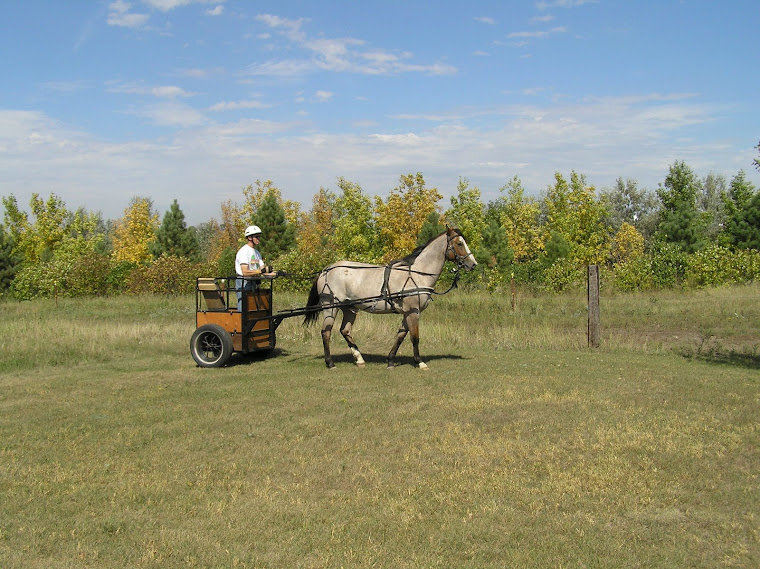


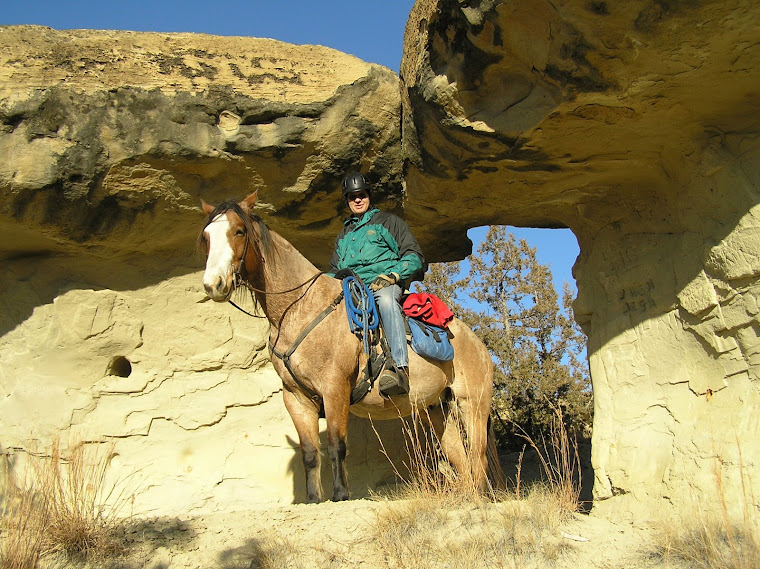



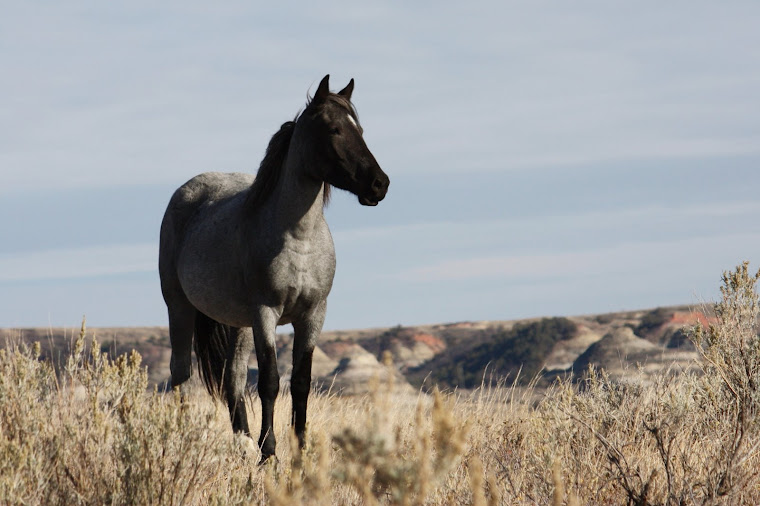


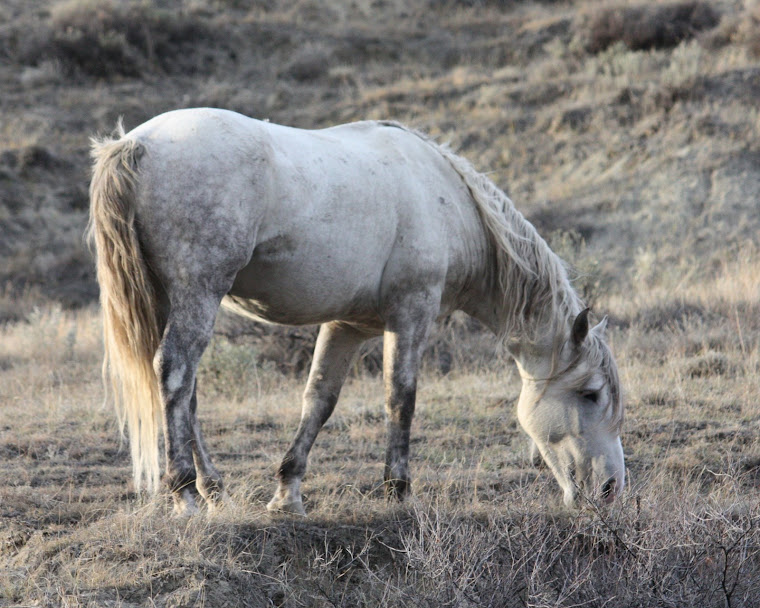
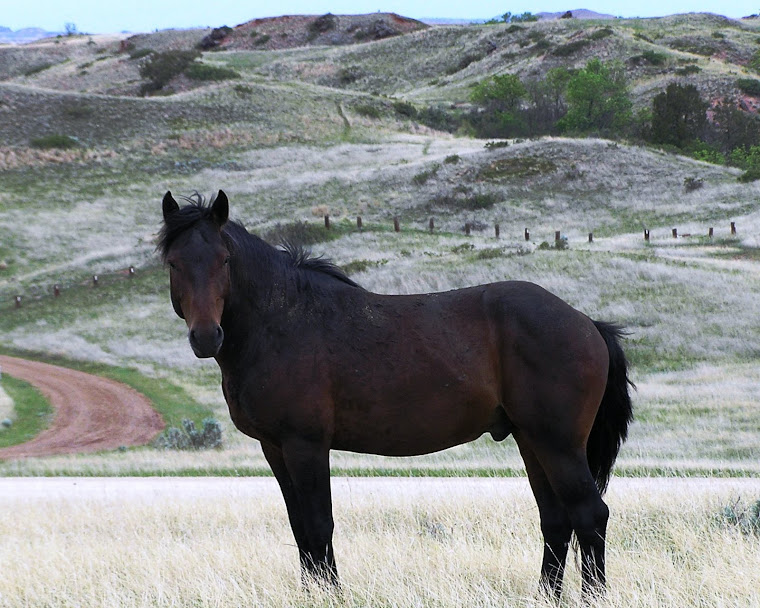

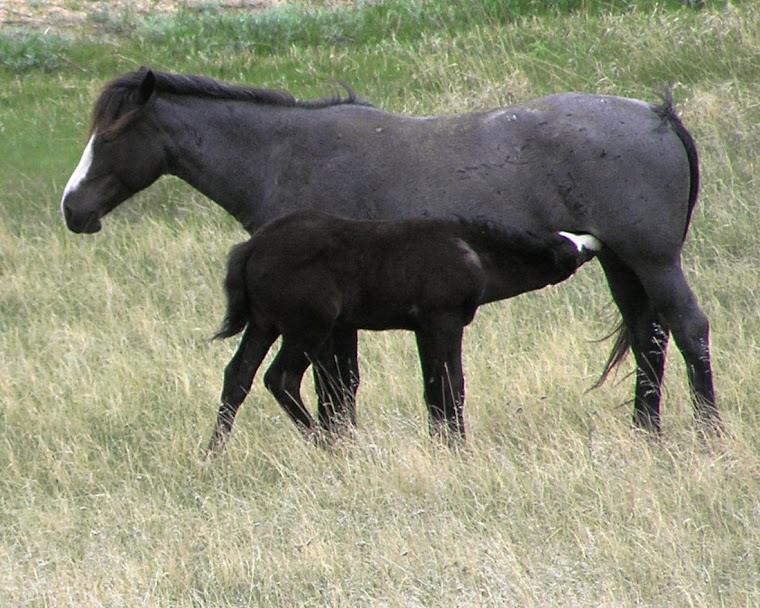
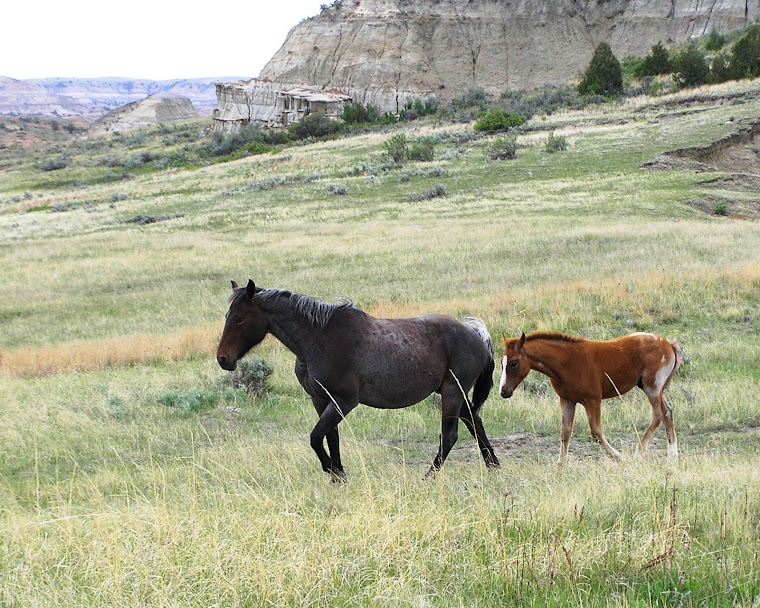
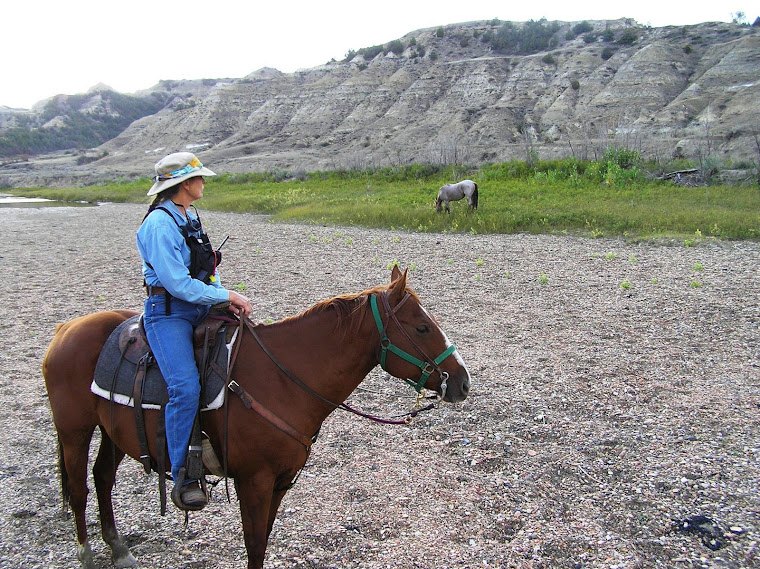
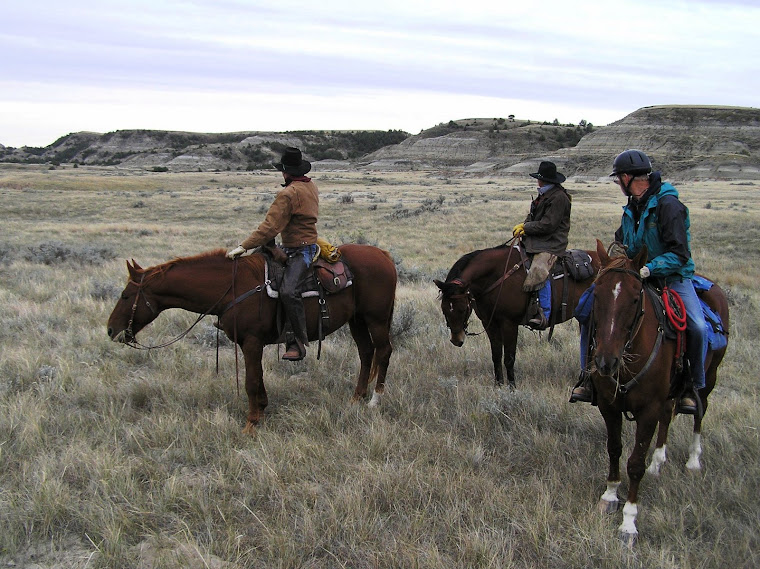
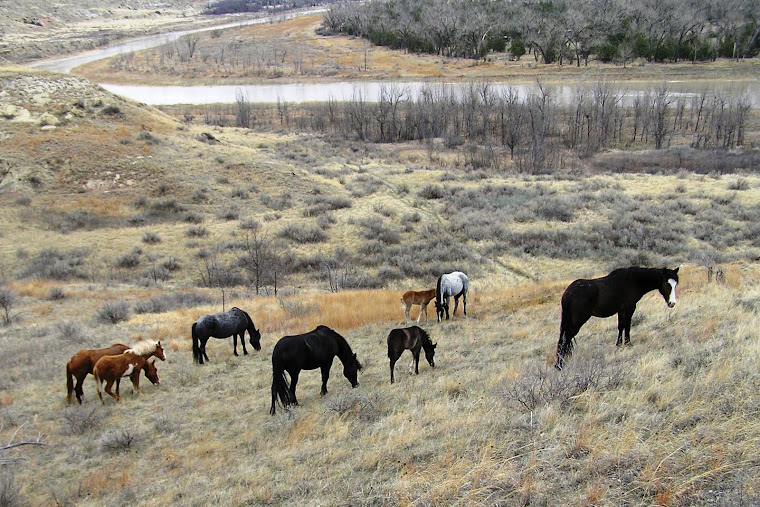
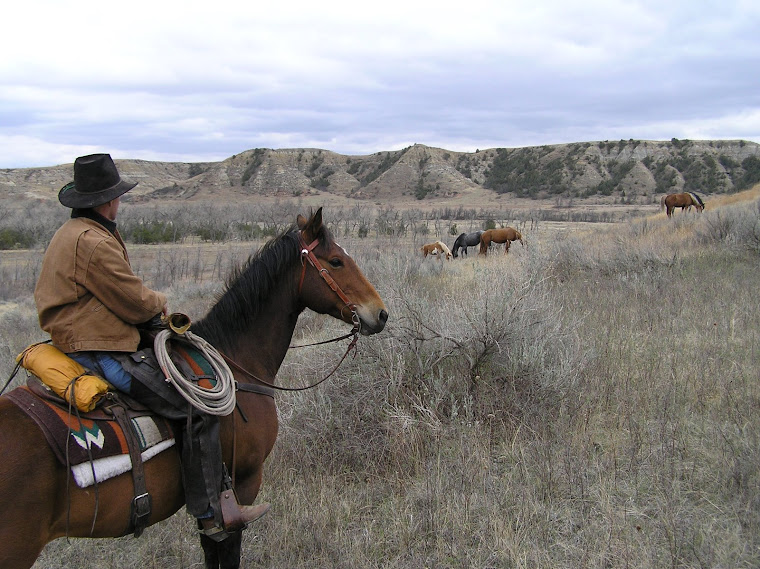

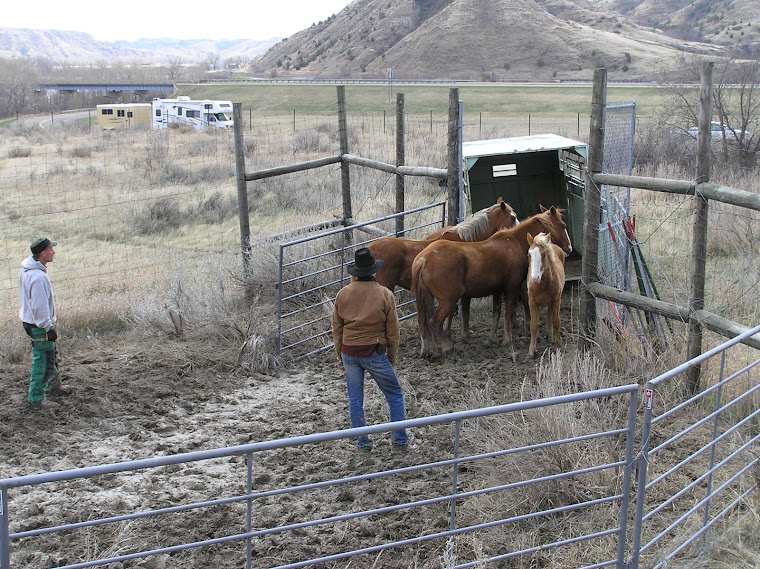
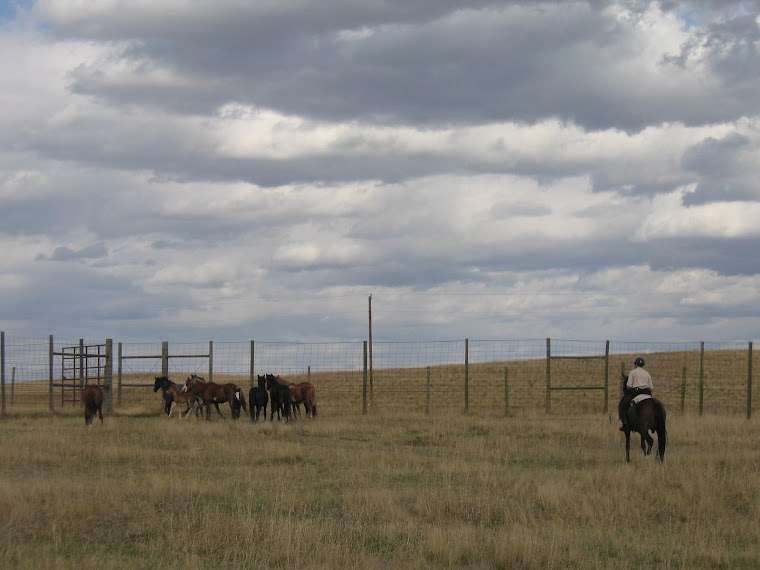
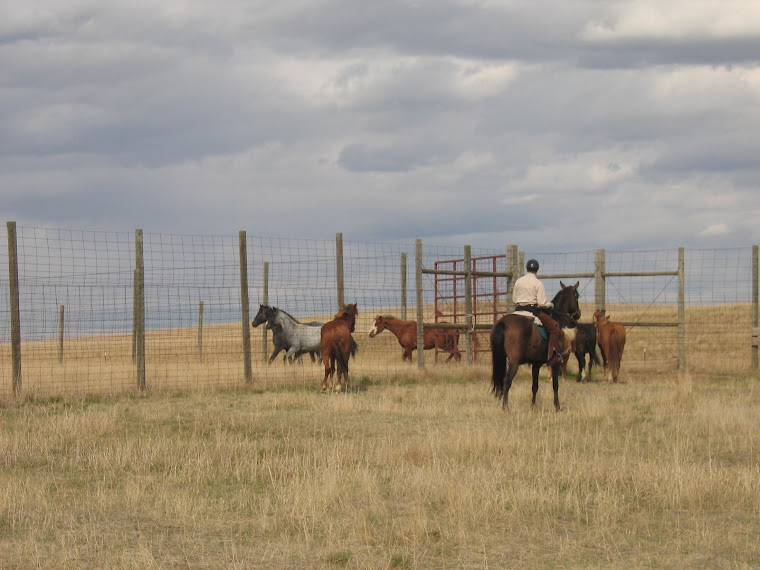
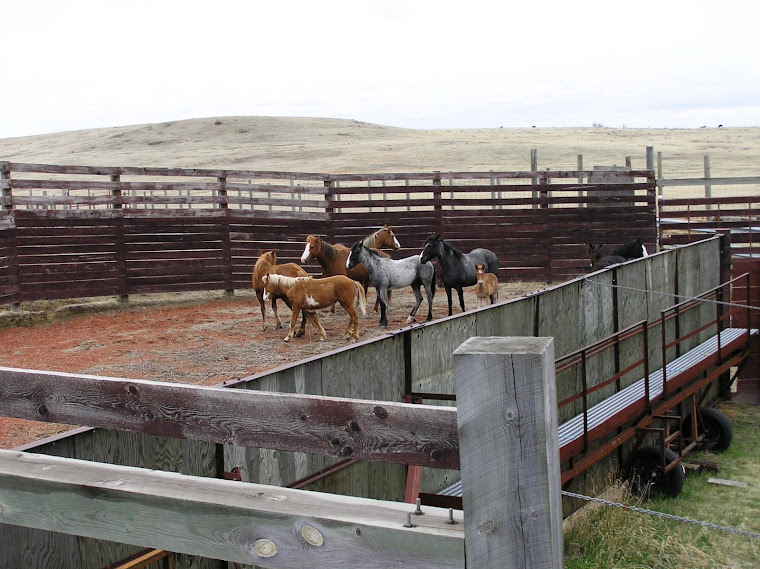


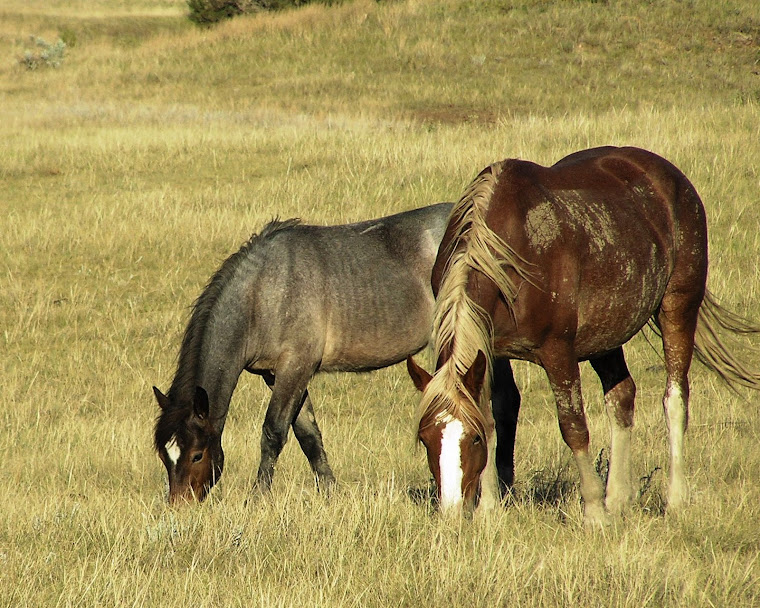

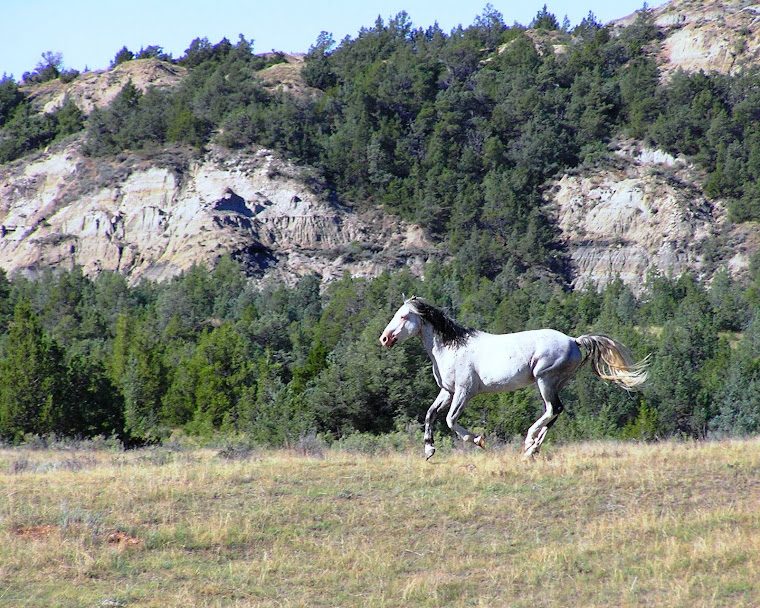
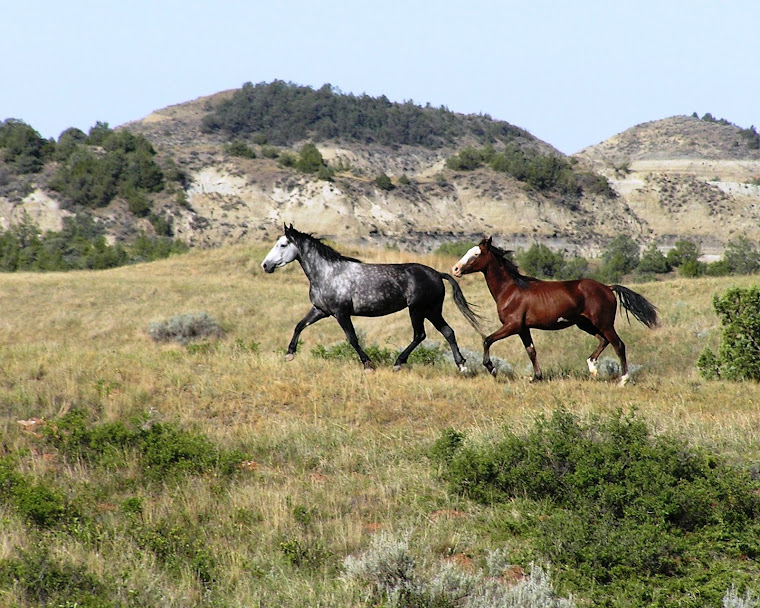
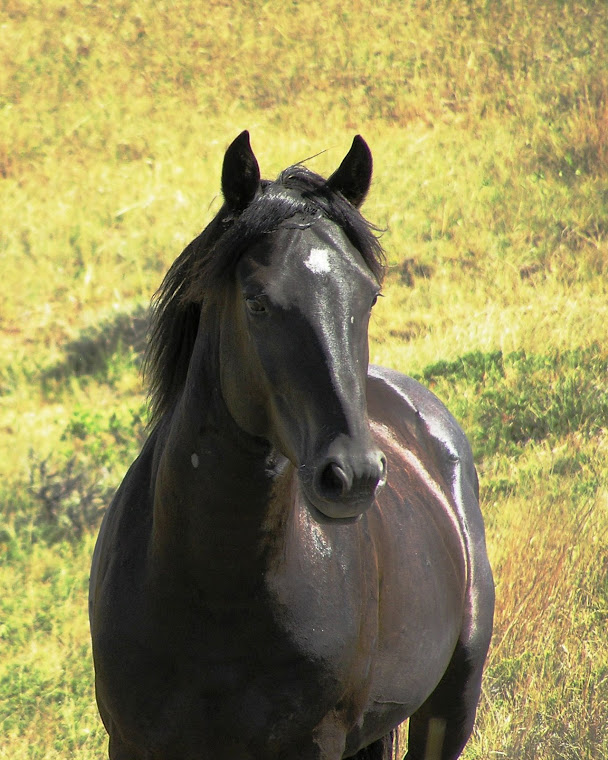

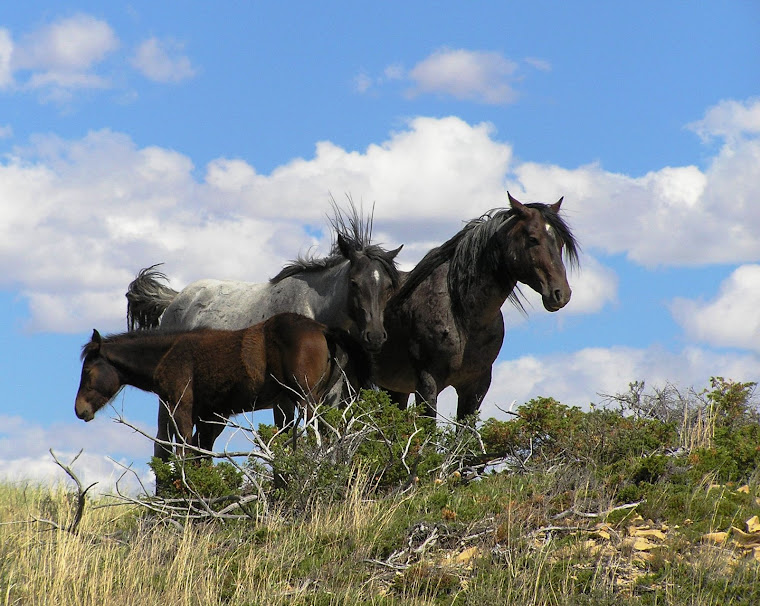



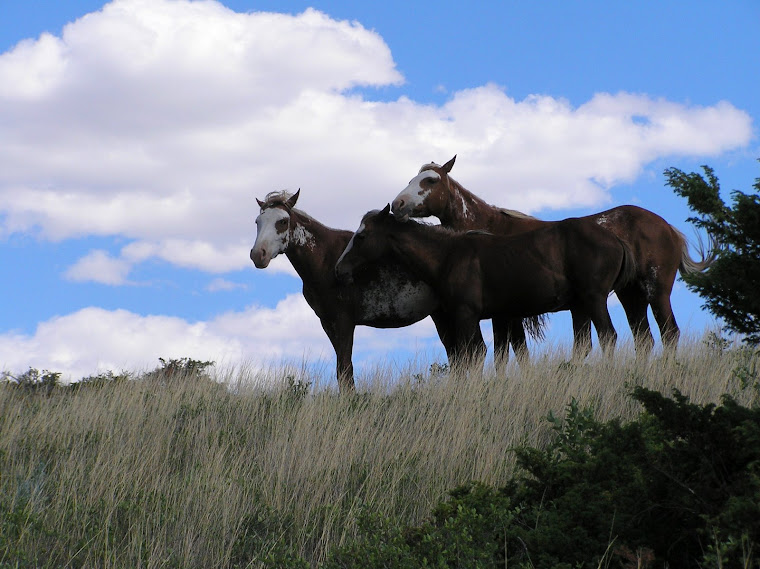


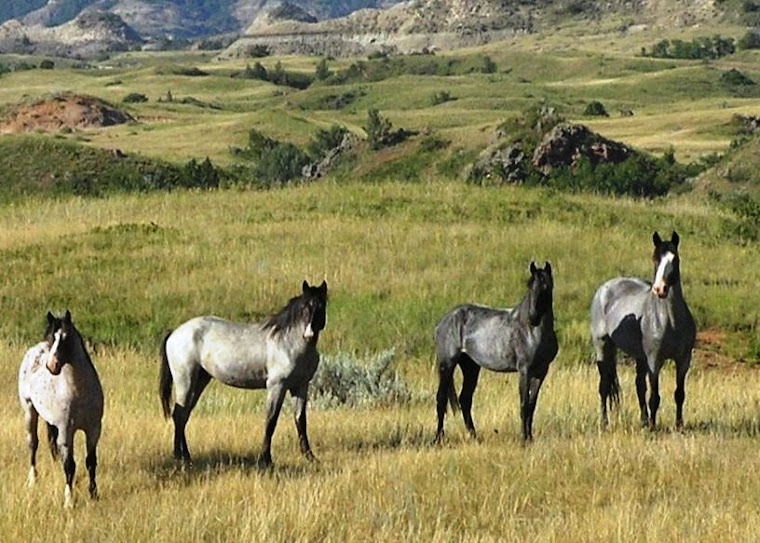

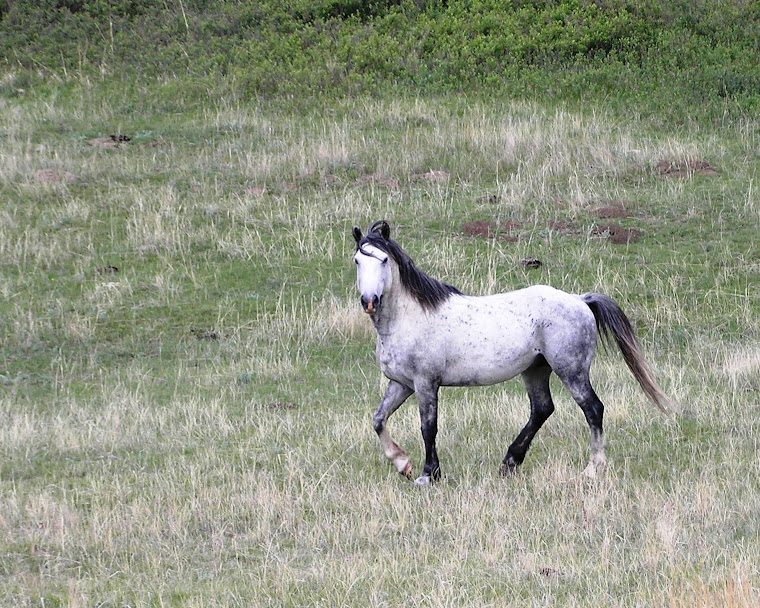

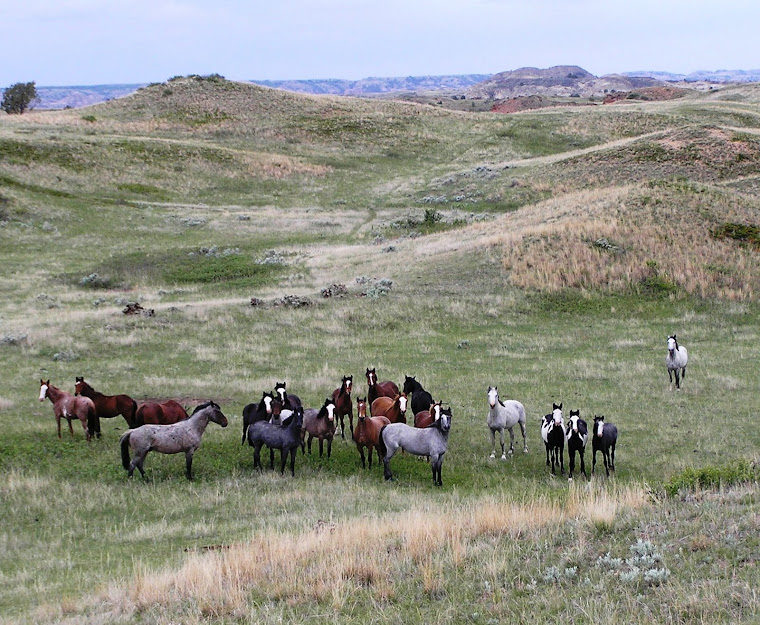
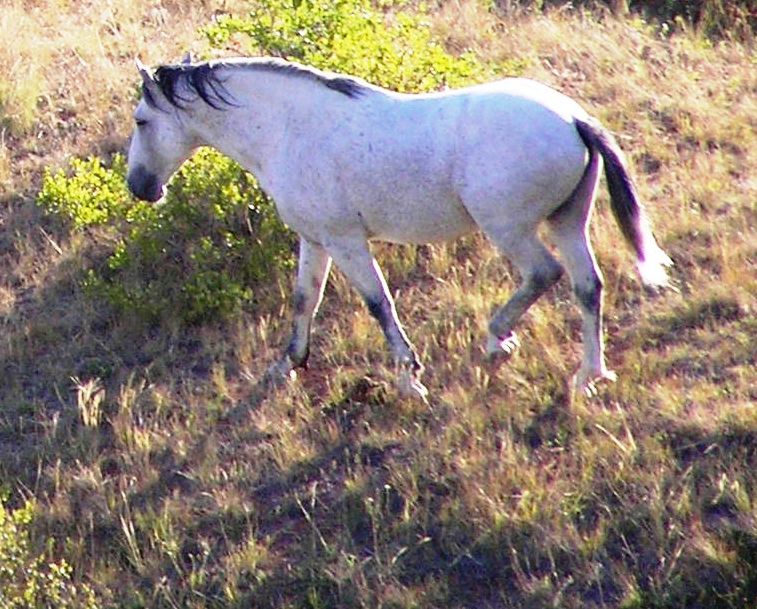

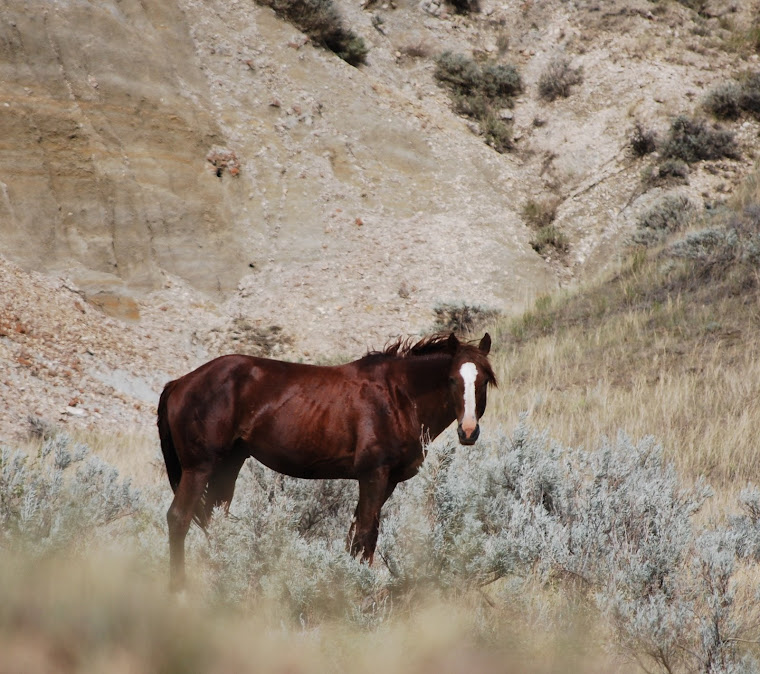

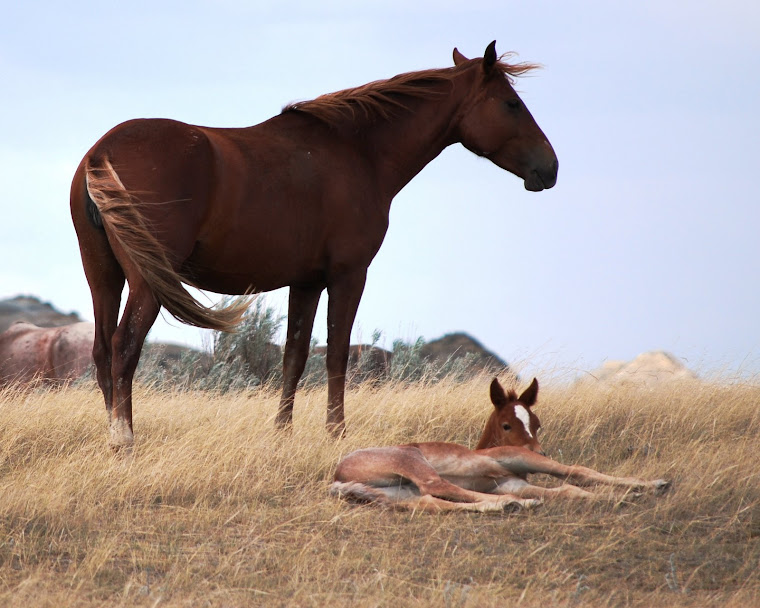
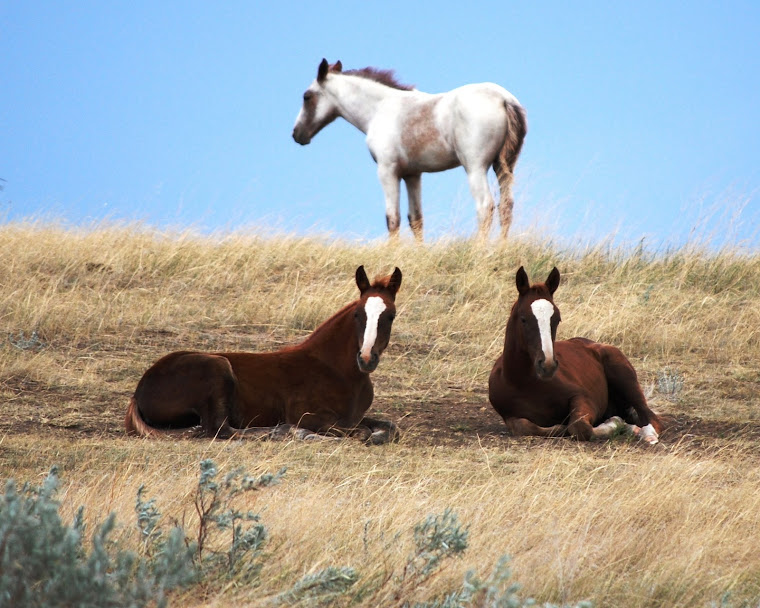
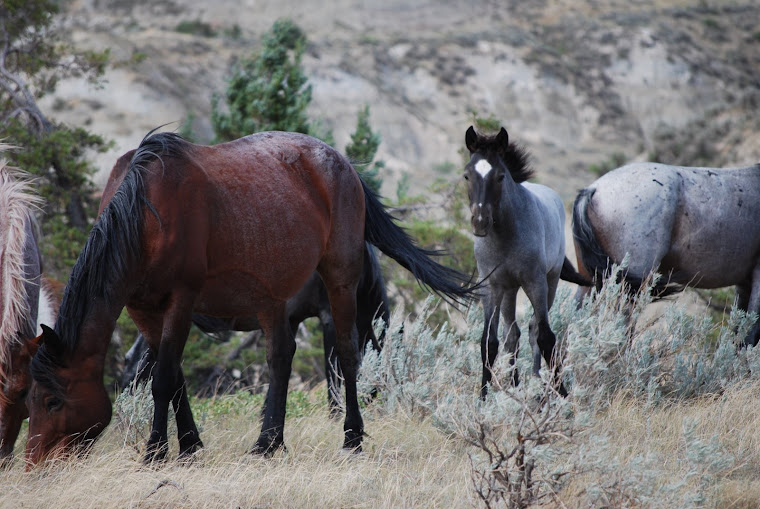

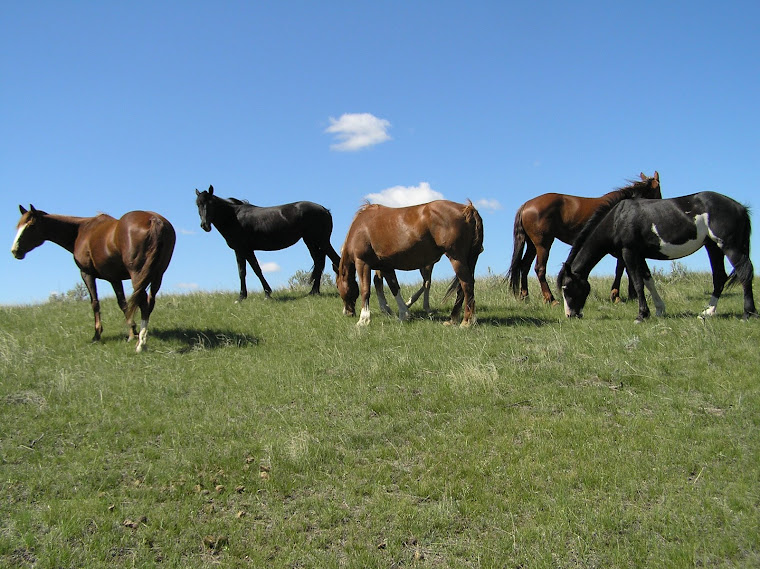
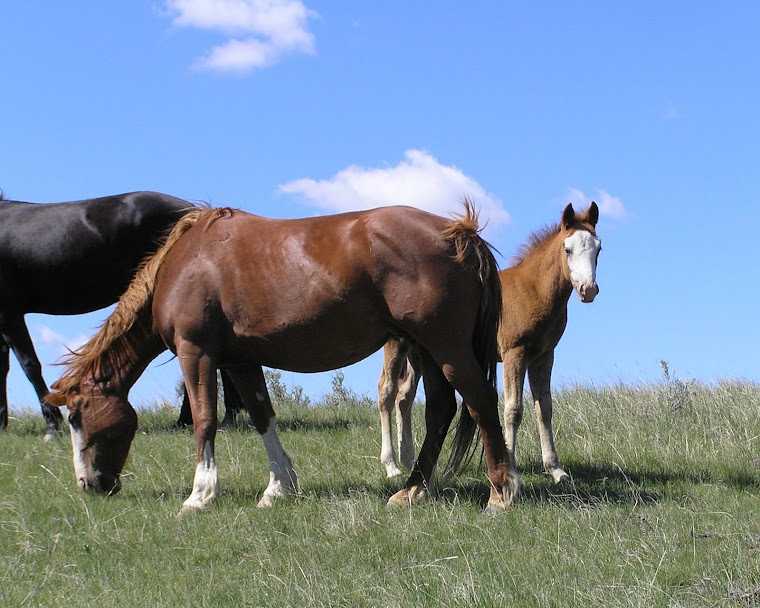

No comments:
Post a Comment